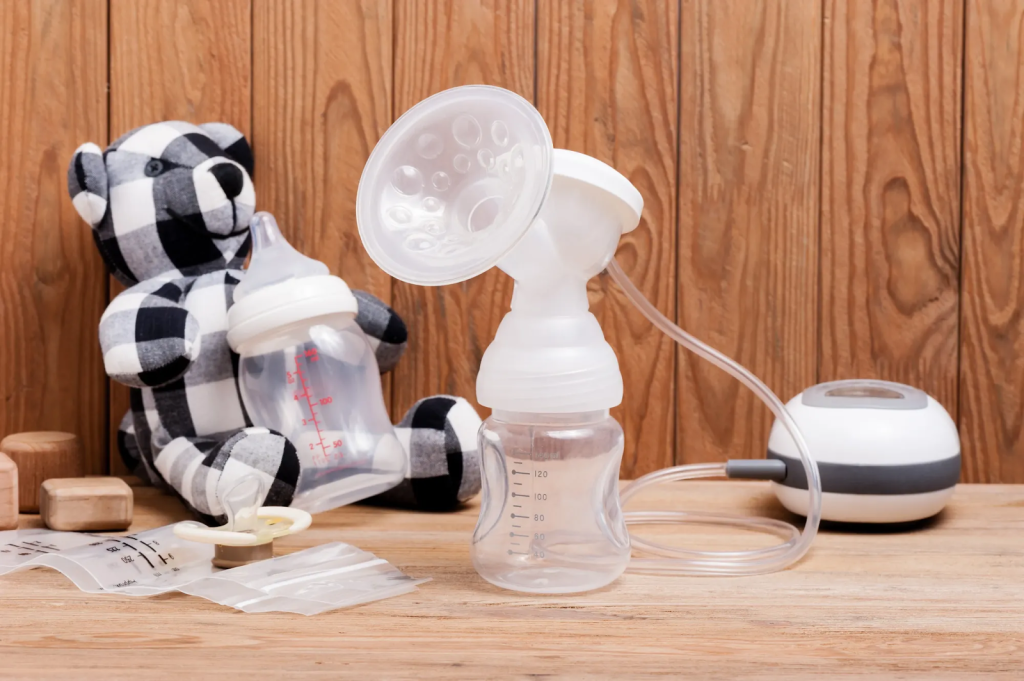
Breastfeeding is a special and important part of many mothers’ lives, but it can also be tiring and time-consuming. Hands-free breast pumps have become a helpful solution, giving mothers the freedom to pump milk without being stuck in one place. These pumps make it easier to care for your baby while still handling other tasks in your day.
What is a Hands-Free Breast Pump?
A hands-free breast pump is a device that allows you to express milk without needing to hold the pump in place. Instead, it fits inside your clothing or uses special parts that let you move around while pumping. This means you can take care of other things — like working, playing with your child, or relaxing — while still collecting milk for your baby.
Key Features to Look For
When choosing a hands-free breast pump, there are a few important things to keep in mind:
- Comfort – The pump should fit well and feel gentle on your body. If it’s too tight or awkward, it can cause discomfort.
- Efficiency – A good pump should collect milk quickly and fully, so you don’t have to spend too much time pumping.
- Portability – Many mothers need to pump away from home, so a light, easy-to-carry design is helpful.
- Easy to Clean – Breast pumps should be simple to take apart, wash, and reassemble.
- Ease of Use – The pump should be simple to operate, even when you’re busy or tired.
Benefits of Using a Hands-Free Pump
Hands-free pumps offer many advantages, including:
- Freedom to Move – You can do light household chores, answer calls, or even rest while pumping.
- Less Stress – Being able to pump without sitting still for long periods can make breastfeeding feel easier.
- Better Milk Supply – Pumping more often and in a relaxed way can help maintain or even increase milk production.
- Privacy – Many hands-free pumps are quiet and fit under clothing, making it easier to pump without drawing attention.
Things to Consider Before Buying
While hands-free pumps are convenient, there are still a few things to think about:
- Fit – The pump should match your body shape to work effectively.
- Noise – Some pumps are louder than others, which might matter if you plan to use them in public or at work.
- Battery Life – If you’ll be using the pump often or away from home, make sure it can last long enough without needing frequent charging.
- Cost – Prices can vary, so find one that fits both your needs and your budget.
Tips for Using a Hands-Free Pump Effectively
To make the most of your pump:
1. Ensure Proper Fit – Adjust the pump so it feels comfortable and collects milk efficiently.
2. Create a Routine – Pump at the same times each day to maintain a steady milk supply.
3. Stay Hydrated and Relaxed – Drinking enough water and staying calm can help with milk flow.
4. Keep Spare Parts – Having extra bottles, flanges, or membranes can prevent missed sessions if something needs cleaning or replacement.
Clearing Up Common Myths
There are a few misunderstandings about hands-free pumps:
- Myth: They are less effective than traditional pumps.
Many hands-free pumps work just as well as regular ones when used correctly. - Myth: They are uncomfortable.
Most modern pumps are designed to fit well and be gentle on the body. - Myth: They are only for certain lifestyles.
Hands-free pumps can help all kinds of mothers, whether they work from home, travel often, or simply want more flexibility.
Keeping Your Pump Clean and Safe
Good cleaning habits are important to keep your pump safe for your baby.
- Wash all parts that touch milk after every use with warm, soapy water.
- Use a small brush to remove milk residue.
- Sterilize parts regularly by boiling them or using a steam method.
- Check parts for wear and replace them when needed to keep the pump working well.
Types of Hands-Free Pumps
Hands-free pumps come in different styles:
- Wearable Pumps – These fit inside your bra and let you move freely.
- Traditional Pumps with Hands-Free Add-Ons – These use special bras or straps so you don’t have to hold them.
- Electric Models – These are faster and usually more powerful.
- Manual Models – These are simpler, quieter, and less costly, but require more effort.
Choosing the right type depends on your daily routine, comfort needs, and budget.
Real-Life Benefits
Many mothers say that using a hands-free pump has helped them continue breastfeeding longer. They appreciate being able to pump while caring for their baby, working, or even relaxing. The extra flexibility often makes the whole experience less stressful and more enjoyable.
Final Thoughts
The best hands-free breast pump is one that fits comfortably, works efficiently, and suits your lifestyle. Think about when and where you’ll be using it, how easy it is to clean, and how well it fits your budget. By choosing the right pump, you can enjoy more freedom and flexibility while still giving your baby the benefits of breast milk.
Hands-free breast pumps are not just about convenience — they can make breastfeeding a more comfortable and sustainable part of your daily life.
